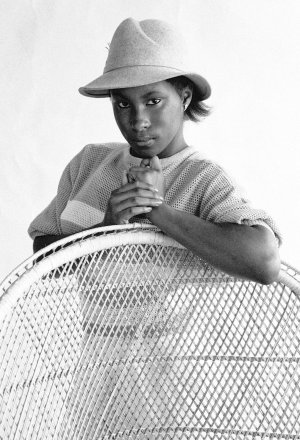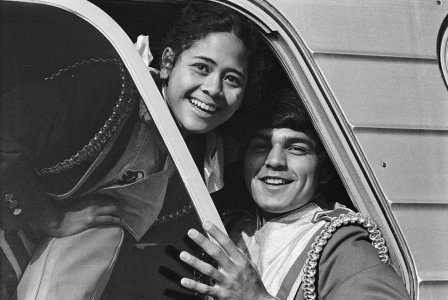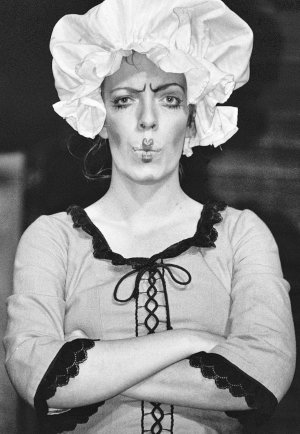boojum
Mentor
It scans up to 5400. But buying a used scanner is dicey. Why is it being sold?If it helps, I bought mine in 2008 and it still works as new. I've seen them as low as $250. Probably still better and higher resolution than any new Plustek.
The VueScan looks like it might be good. It is $25, $49 and $100. Guess which one does slides. LMAO
Godfrey
somewhat colored
VueScan is the best scanning app to drive both flatbed and negative scanners I've found. It's complex, but it is the most controllable and makes excellent scans.It scans up to 5400. But buying a used scanner is dicey. Why is it being sold?
The VueScan looks like it might be good. It is $25, $49 and $100. Guess which one does slides. LMAO
I've bought three used film scanners in the past twenty years, and sold two of them. Why?
- One was the Nikon SuperCoolscan 9000 ... got it used, used it for four years, and sold it when I wasn't using it any more. A superb scanner, but it takes up a lot of space and is complex in use. It was simply more scanner than I needed. In the end, the SuperCoolscan 9000 became more valuable by the time I sold it than it was when I bought it, I made some profit selling it.
- The next was the Nikon Coolscan IV ED ... A superb scanner, I scanned everything up to 35mm with it. Bought it used. Very reliable, very high quality scans, very robust scanner. (Oh yes, the friend who bought it from me is still using it... 13 years later.)
- I sold the Coolscan IV ED when I bought the Coolscan V ED, used again. I bought the V because I wanted the higher resolution (4000 ppi vs 2900 ppi). I've been using it for a decade. It is in perfect condition.
People who get "done" with scanning sell their equipment because it is valuable and it is foolish to just have it sit around unused if you've stopped needing it.
G
bcostin
Well-known
- The next was the Nikon Coolscan IV ED ... A superb scanner, I scanned everything up to 35mm with it. Bought it used. Very reliable, very high quality scans, very robust scanner. (Oh yes, the friend who bought it from me is still using it... 13 years later.)
I also use a Coolscan V which I bought used years ago. "Robust" is the right word; it just works and works.
ChrisPlatt
Thread Killer
Are there any good current model film scanners usable with current Windows versions in the $300 price range?
Chris
Chris
agentlossing
Well-known
Plustek 8100 for $349? Or the 8200I (I stands for infrared I think) for $399.
boojum
Mentor
The Epson V600 is currently US$257 on Amazon.
Out to Lunch
Menteur
Is anyone using the Epson V600 with Windows 11? Easy set-up?
Chriscrawfordphoto
Real Men Shoot Film.
Is anyone using the Epson V600 with Windows 11? Easy set-up?
I have a V600 I use all the time with Windows 10 with no issues. I've used it with both the Epson software and with Vuescan. I just scan prints with it, though. I have never used it for film.
Out to Lunch
Menteur
Thanks for your feedback, Chris. Good to know. I'll be mostly using the V600 to scan prints from the family photo albums which I inherited a few years ago, and to scan prints from my 35mm days. During my last stay in Vietnam, I found a lab in Saigon where I could scan film at a reasonable price -I'm keeping my fingers crossed. Cheers, OtL
agentlossing
Well-known
Epson Scan is a lightweight and modern-feeling program that shouldn't have any problems with Windows 11. It's not fancy but it does the job.
Out to Lunch
Menteur
Which is what I'm after. Thanks for your feedback, agentlossing.It's not fancy but it does the job.
peterm1
Mentor
I too ended up with a huge batch of slides for scanning after one day in the city, I ran into my ex wife (20+ years on) and she offered me the slides (and also a significant number of negatives and prints) taken by me all those years ago. I guess they were no longer relevant to her, and she lost interest in storing them. I looked into slide scanning technology but having previously tried scanning a far smaller number of slides and prints using a flatbed scanner which came with appropriate film holders and built in illumination designed for scanning negatives and transparencies, I quickly realized this would be far too slow. With this type of technology every scan can take minutes of scanning time at high resolution - and high resolution is essential for scanning negatives and transparencies (though not so much for prints due to their larger starting size). The slight advantage of this system was it also came with some reasonably functional software for scanning which allowed each photo, slide or transparency to be viewed in the scanning software and digitally tweaked before scanning actually takes place. Tweaks made in the software are then reflected in the output from the scanner.
I approached my local camera store which had a few old bellows outfits for cameras some of which had "slide copiers" (essentially the slide / negative holder with diffuser for backlighting) with the bellows. These were pretty cheap - under $100 AUD and that is what I decided to do. Accordingly, I bought an M42 Pentax bellows outfit with a "slide copier" attachment. Long story short, it worked pretty well. I set up the bellows outfit on a tripod facing a table on which I stood an LED light panel (a $20 purchase from a hardware store - nothing fancy was needed as long as it put out a neutral light of sufficient brightness and evenness, and light panels for photography tend to be a good deal more expensive). I attached a Pentax Super Takumar 55mm f1.8 lens (stopped down to f8) to the bellows (this bellows, being a Pentax one was designed and calibrated for this specific lens) and used a Sony NEX 5 to capture the images. It's a bit of a fiddle-faddle to set up and get the lighting / focusing etc. exactly correct, and this was made a little harder (by the fact that I used a cropped sensor camera) which introduced a risk of accidentally cropping out something I did not want cropped around the edges of the slides. But it's perfectly "do-able". If I had to do it again, one further refinement I might consider is to shoot "tethered" directly into my PC or at least a tablet so I have a far bigger and more high-resolution computer screen to preview each image as it is loaded and scanned. (Not sure how to do this yet so more research is needed). I think this would help at least getting the scanning hardware focused and slides properly lit. (Once focused though, no further focusing changes should be needed, but sometimes individual tweaks to specific images were needed in terms of exposure).
The process itself is very quick - I was probably scanning one slide every 10 seconds or less once everything was set up properly. (Drop a slide in, quickly eyeball it, press the shutter button, remove the slide, rinse and repeat). Once a session was completed the images were imported to Lightroom from the SD card and Lightroom was used for post processing. The biggest issue was that even with pre-cleaning of the slides there were still lots of dust and scratches on them and these problems needed yet more attention in post processing if I wanted to optimize the images (some I did not bother with as when viewed on screen they were simply not worth saving). This, I suppose, is one good argument for using modern digital scanner as some (maybe all of them these days) can automatically look for and digitally erase dust and scratches. But offset against this is that I would probably need to post process images coming from such a set up anyway and by using a lens of high quality (and the Takumar 55mm is nothing if not sharp, especially stopped down) and a 16megapixel sensor I had plenty of image data to play with. One further issue I noted (that everyone will experience no doubt) is that many slide shots are, when viewed on screen, noticeably soft compared with modern digital images - we had different standards of sharpness back then I think).
In summary - this "old school" based scanning approach works very well. It is much cheaper than buying a high-quality dedicated digital scanner (though cheap solutions are available online which may or may not work - I cannot comment).
The following example is from a scanned slide, imported into Lightroom. (This is a much smaller size for some reason - I cannot recall why but it shows adequately the quality that can be captured by this method assuming it was there originally.)
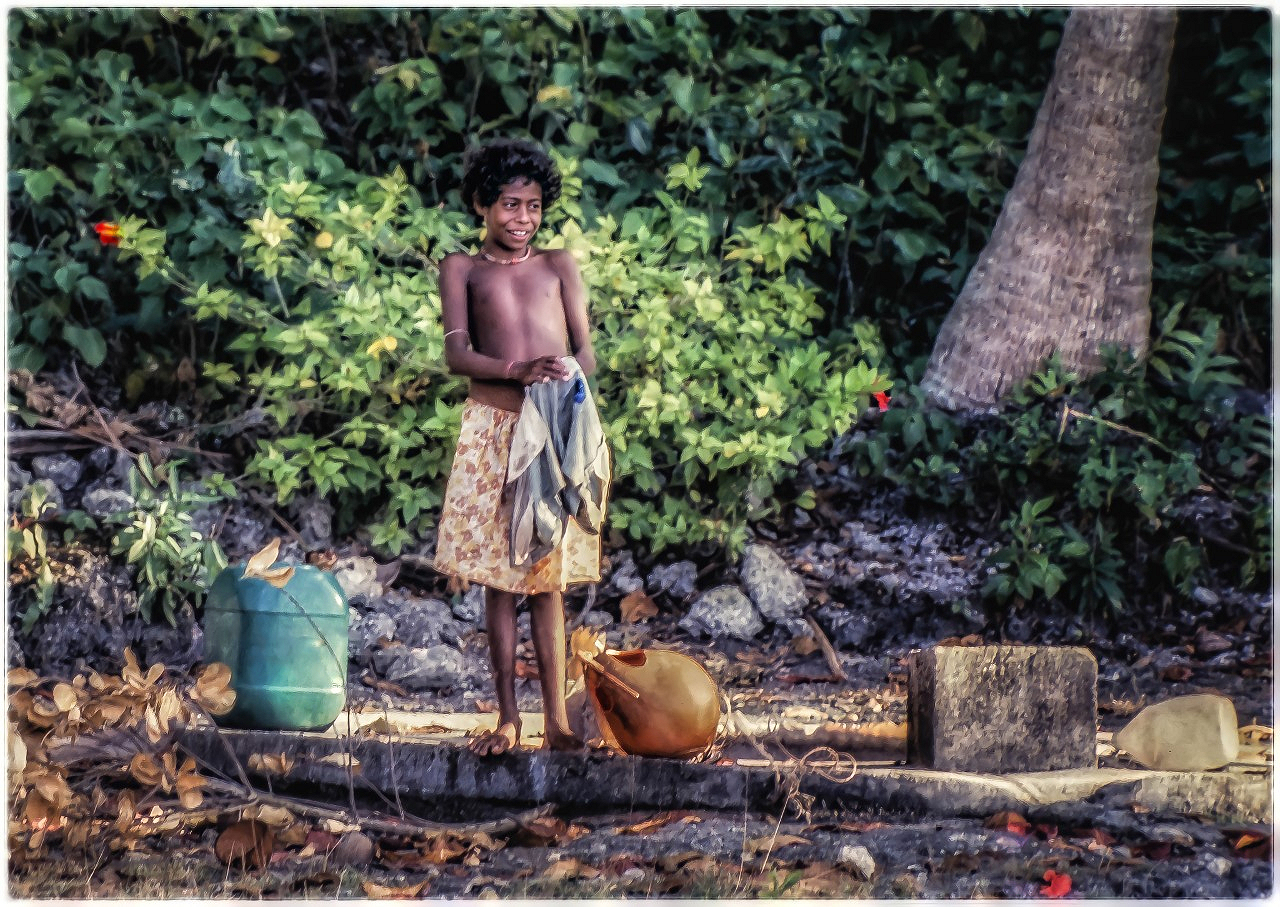 South Pacific c1990 - By a village well. by Life in Shadows, on Flickr
South Pacific c1990 - By a village well. by Life in Shadows, on Flickr
I approached my local camera store which had a few old bellows outfits for cameras some of which had "slide copiers" (essentially the slide / negative holder with diffuser for backlighting) with the bellows. These were pretty cheap - under $100 AUD and that is what I decided to do. Accordingly, I bought an M42 Pentax bellows outfit with a "slide copier" attachment. Long story short, it worked pretty well. I set up the bellows outfit on a tripod facing a table on which I stood an LED light panel (a $20 purchase from a hardware store - nothing fancy was needed as long as it put out a neutral light of sufficient brightness and evenness, and light panels for photography tend to be a good deal more expensive). I attached a Pentax Super Takumar 55mm f1.8 lens (stopped down to f8) to the bellows (this bellows, being a Pentax one was designed and calibrated for this specific lens) and used a Sony NEX 5 to capture the images. It's a bit of a fiddle-faddle to set up and get the lighting / focusing etc. exactly correct, and this was made a little harder (by the fact that I used a cropped sensor camera) which introduced a risk of accidentally cropping out something I did not want cropped around the edges of the slides. But it's perfectly "do-able". If I had to do it again, one further refinement I might consider is to shoot "tethered" directly into my PC or at least a tablet so I have a far bigger and more high-resolution computer screen to preview each image as it is loaded and scanned. (Not sure how to do this yet so more research is needed). I think this would help at least getting the scanning hardware focused and slides properly lit. (Once focused though, no further focusing changes should be needed, but sometimes individual tweaks to specific images were needed in terms of exposure).
The process itself is very quick - I was probably scanning one slide every 10 seconds or less once everything was set up properly. (Drop a slide in, quickly eyeball it, press the shutter button, remove the slide, rinse and repeat). Once a session was completed the images were imported to Lightroom from the SD card and Lightroom was used for post processing. The biggest issue was that even with pre-cleaning of the slides there were still lots of dust and scratches on them and these problems needed yet more attention in post processing if I wanted to optimize the images (some I did not bother with as when viewed on screen they were simply not worth saving). This, I suppose, is one good argument for using modern digital scanner as some (maybe all of them these days) can automatically look for and digitally erase dust and scratches. But offset against this is that I would probably need to post process images coming from such a set up anyway and by using a lens of high quality (and the Takumar 55mm is nothing if not sharp, especially stopped down) and a 16megapixel sensor I had plenty of image data to play with. One further issue I noted (that everyone will experience no doubt) is that many slide shots are, when viewed on screen, noticeably soft compared with modern digital images - we had different standards of sharpness back then I think).
In summary - this "old school" based scanning approach works very well. It is much cheaper than buying a high-quality dedicated digital scanner (though cheap solutions are available online which may or may not work - I cannot comment).
The following example is from a scanned slide, imported into Lightroom. (This is a much smaller size for some reason - I cannot recall why but it shows adequately the quality that can be captured by this method assuming it was there originally.)
 South Pacific c1990 - By a village well. by Life in Shadows, on Flickr
South Pacific c1990 - By a village well. by Life in Shadows, on Flickr
Last edited:
webouser2
Newbie
You get a larger scanning light with the V800. I have the Epson V600 and it has a narrow, maybe 3 1/2 in or 8 1/2 cm, wide scanning light. So it is limited to 2 strips of 35mm film, 4 2by2 inch square slide mounts, or a strip of 120 film. The Epson V800 accommodates 12 mounted slides, 3 35mm film strips (up to 18 frames), 1 120 strip (up to 6 x 20 cm) and one 4 inch x 5 inch frame.Actually, pushing these slides through some kind of scanning device would be OK. Better than mowing the lawn or any other constructive efforts. I have a lot of slides from a month long trip through China in '88 when it was all bicycles not BMW's. And other stuff, too.
From what I have found digging around I can cobble together a rig and photograph the slides or I can just go out and get the V600 scanner. The V600 will scan up to 6400 DPI which is pretty dense, and slow I would guess. But I can see what Epson sells so many. They are an easy way to get good results.
Can anyone tell me yea or nay on the V600? It costs almost $1,000 less that the V850 and on paper yields the same results but on a smaller scanning bed. As all I want to do is slides a small bed would work.
I have been very happy with the scans using the Epson stock film holders. Scanning film with the Epson scanner is time consuming, I scan one frame at a time. And it can take two passes, a quick scan to determine cropping, and a final full scan per frame. Works well with 120, but I can't see it with 35mm.
Steve W
agentlossing
Well-known
I scanned 35mm with the V550 until I couldn't take the low quality anymore. It's not the best for a small format like that. V600-V800 might be a little better, but I still think flatbeds aren't the best format for scanning 35mm.
Out to Lunch
Menteur
The V800 is no longer in production. It's, either the $1,300 V850 or the $350 V600.V600-V800 might be a little better
agentlossing
Well-known
If it's just 35mm slides, I'd probably spend $350 on a Plustek instead.
Bill Blackwell
Leica M Shooter
das
Well-known
There is no substitute for a dedicated scanner.
Out to Lunch
Menteur
Sure but which one? Since I have lots of prints to scan, a dedicated negative scanner is not an option. Cheers, OtLThere is no substitute for a dedicated scanner.
Godfrey
somewhat colored
I've had several film scanners over the years, still have my Nikon CoolScan V ED. But for the past 9 years or so, I've used a copy camera approach to scanning that is far faster in operation, yields higher pixel count, and is much more versatile.
My current setup from today's scanning binge:
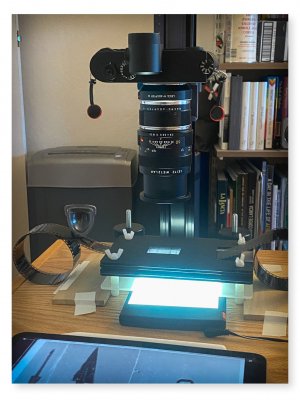
From bottom to top:
iPad Pro 11" running Leica FOTOs app
Novoflex Magic copy stand
Hakon flat-panel light box
Essential Film Holder with 35mm standard frame fitted
Novoflex focusing rail
Leitz Macro-Elmarit-R 60mm f/2.8 + Macro-Adapter-R
Leica R-Adapter-M
Leica M10 Monochrom + Visoflex 020
I scanned 114 frames in a little less than an hour. They rolled into LR and convert to positives with my default develop preset in about 5 minutes; good enough for selecting the set to put rendering work into. The resulting image files at the magnification I use nets a 34 Mpixel image area after cropping out the rebate. The same job using the Nikon CoolScan V ED would have taken a couple of hours, at least, and the resulting image files output at ~21 Mpixel sizing; the scanner does not have the dynamic range of the M10-M, however, so that's an additional plus for the copy camera approach.
Whatever works. This is probably the 30th scanning setup I've worked out since 1991...
G
My current setup from today's scanning binge:

From bottom to top:
iPad Pro 11" running Leica FOTOs app
Novoflex Magic copy stand
Hakon flat-panel light box
Essential Film Holder with 35mm standard frame fitted
Novoflex focusing rail
Leitz Macro-Elmarit-R 60mm f/2.8 + Macro-Adapter-R
Leica R-Adapter-M
Leica M10 Monochrom + Visoflex 020
I scanned 114 frames in a little less than an hour. They rolled into LR and convert to positives with my default develop preset in about 5 minutes; good enough for selecting the set to put rendering work into. The resulting image files at the magnification I use nets a 34 Mpixel image area after cropping out the rebate. The same job using the Nikon CoolScan V ED would have taken a couple of hours, at least, and the resulting image files output at ~21 Mpixel sizing; the scanner does not have the dynamic range of the M10-M, however, so that's an additional plus for the copy camera approach.
Whatever works. This is probably the 30th scanning setup I've worked out since 1991...
G
Share:
-
This site uses cookies to help personalise content, tailor your experience and to keep you logged in if you register.
By continuing to use this site, you are consenting to our use of cookies.


